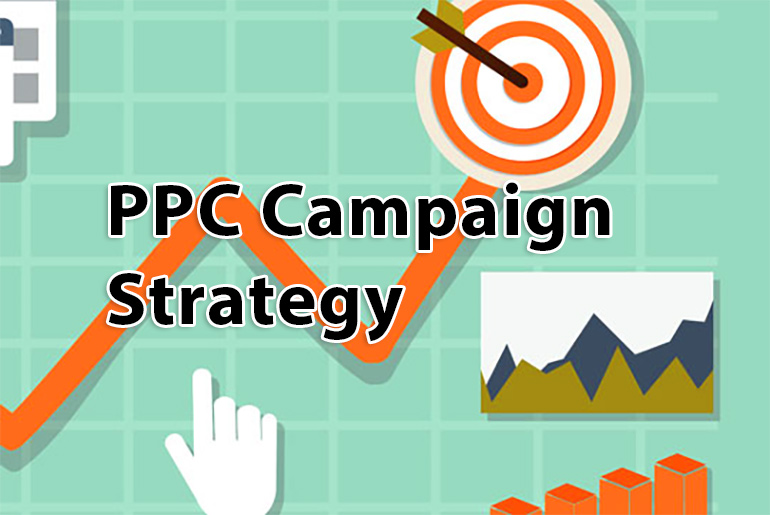Updated July 13th, 2022
Table of Contents
7 Powerful Tips to Develop an Effective PPC Campaign Strategy
Did you know that consumers would make over 160 billion searches on Google every month, whether organic or paid search results?
That’s why search advertising, particularly in the form of pay-per-click ads (PPC), actually gives you a greater opportunity to drive traffic to your website, boosting your branding and revenue. These ads would work hand-in-hand with organic search marketing, so you can take advantage of and gain traction in search results pages.
But if you would like PPC to work as effectively as expected, you need to create the winning PPC strategy. You can hire businesses like joelhouse.com or adonwebs.com to do the job for you, but it’s still best to know how to build an effective and stable foundation for your PPC ads to flourish on. With that in mind, read on to learn about how to build and execute the optimum PPC strategy made for your business!
Must-Reads :
Location Targeting in Google Ads – Avoid Common Mistake
9 Best Practical Tips to Write PPC Text Ads
Dynamic Search Ads – The Ultimate Guide on DSA Campaigns
Google Adwords Tutorial – Create Your First Profitable Campaign
Building a Successful PPC Strategy
Whether you’re new to the digital marketing industry or have already tried PPC before, creating a strategy is a bit difficult. You can’t always stick to the same strategy every time, since there are a lot of factors to consider, from the webpage or product you’d like to promote, down to your competitors and keywords used.
With that in mind, here are the helpful tips to get you started:
#1 Define Your Goals and Budget
You can have various goals when it comes to paid search strategies, from boosting your growth down to generating profit or driving conversions. You have to ask yourself: What goal makes sense for your brand and/or business?
First of all, make sure that your PPC goals align with your overall digital marketing strategy. For instance, if you have a marketing goal to increase website traffic, then you should have a PPC strategy goal of achieving a higher click-through rate to your website.
Afterward, make sure that your paid marketing goals aren’t working against your existing organic marketing activities. Look into your organic marketing strategies for keywords you should consider including in the PPC budget. Furthermore, check how much voice you can capture from SEO efforts and the audience who is a part of your paid traffic.
Before anything, analyze your keywords before adding them, specifically those that already give your business a lot of organic traffic to your website to PPC advertising campaigns.
#2 Analyze Your Competitors
Next up, analyze your competition, which can help you learn who your main competitors are in the paid search area. It will also help you get a gist on what works (and what doesn’t) for them, so you know what to do to compete well.
If you aren’t aware of who your competitors are, exactly, then you can check out competitor analysis tools to help you out. These tools can identify various websites that compete for your audience. Then, you can check out other tools used to search for competitors’ keywords to look into both organic and paid keywords, so you know what to use and prioritize.
#3 Perform Keyword Research
Regardless of whether it’s paid or organic, begin using keywords that would be typed in search engine boxes. While this is a good start, it isn’t the only (and most effective) way to search for successful PPC keywords.
Once you have an idea of what to search for you, can now try looking into broad keyword terms, focused on your product features and/or verticals.
For instance, you are into the fashion industry, you can start off with broad terms like “women’s shoes”. Then, use a tool to start breaking down that main term with related and relevant keywords.
#4 Define the Account Structure
Once you have a list of keywords, you can now execute your PPC ad strategy. Start off by setting up your Google account, defining your Ad Groups and Campaigns.
You will set the budget for the Campaign while determining the keywords to use in Ad Groups. Define campaigns by looking into the different terms you have identified from your keyword research, then identify the actions you’d like your users to take when clicking your website from the keywords.
For instance, when selling women’s shoes, you want to create campaigns for heels with the goal to get the searchers looking for heels to visit your website to create a purchase.
Define the ad groups by looking and using keywords that would fit your campaign, determining how to segment the terms. Set the keywords at ad group level, using those with a similar search intent within the same ad groups.
#5 Write Compelling Ad Texts
With every ad group you have, you need to define and place text ads. A good ad copy is vital for all PPC campaigns, as this can increase your Quality Score and click-through rates while reducing the cost per acquisition. Just like your content, searchers will base their purchasing decision to take action based on what you write, which is why you have to put more effort into this step.
Learn more about the basic rules and policies on ad text, and follow these practices:
- Use your target keyword at least once in the ad headline and text
- Include action words like “sign up” at the beginning of your ad copy so users know what to do and expect
- Include a statistic or price in your ad copy, giving viewers a concrete promise
- Lead with benefits, rather than product features
- Place your display URL, making sure it’s user-friendly and descriptive
- Look into your competitors’ ad copy, creating a more compelling one that people will be more inclined to choose
#6 Create PPC Landing Pages
Consider building PPC landing pages, which is where your ads should lead searchers to. It should be specific to your PPC ad and marketing goals. The closer the match between the search intent and landing page, then the higher conversion rates you receive.
If you send all searchers to a generic page, then they are more likely to bounce, affecting your Quality Score. As a result, your ads won’t show up in searchers as much as expected.
When building your landing page, create one call-to-action based on your main goal made during the planning stage. Keep the page’s design simple and user-friendly, rather than slow-loading with heavy features and images that would make them more inclined to leave before they see the page fully loaded.
#7 Monitor and Report Your Progress
Once everything is done, it’s time to monitor and report how your PPC marketing campaign is doing. This is an essential step into your paid search strategy because if you don’t measure your progress, you won’t be able to report and improve your efforts.
The way you report the PPC ad performance depends on your goal. You can find the information needed from Google Ad reports, mentioning basic reports such as:
- Auction Sights
- Search Terms
- Campaign Performance
- Ad Performance
Look into the increase and decrease of clicks every month, as well as the context behind such changes. For instance, if things increased due to the new season or event, this should be explained in your report.
Finish the report with your projected impact on the long-term goals, and recommend what activities to do next month to improve your current results. Make sure you do this every month and stay consistent!
Wrapping It Up
PPC is an important investment to make, holding a lot of benefits. It’s the reason why SEO companies also offer paid advertising strategies for search engines. But before you invest in PPC, you have to know what to do to get the revenue you need, from executing keyword research to competitor analysis.
With these tips, you now have a gist on where to begin when creating PPC strategies. Now that you’re familiar with the steps, start following them right away, before your competitors do. Good luck!







![How to Fix Invalid Value GTIN [gtin] – Google Merchant Center How to Fix Invalid Value GTIN](https://adonwebs.com/aw/wp-content/uploads/2022/08/How-to-Fix-Invalid-Value-GTIN--270x180.jpg)




